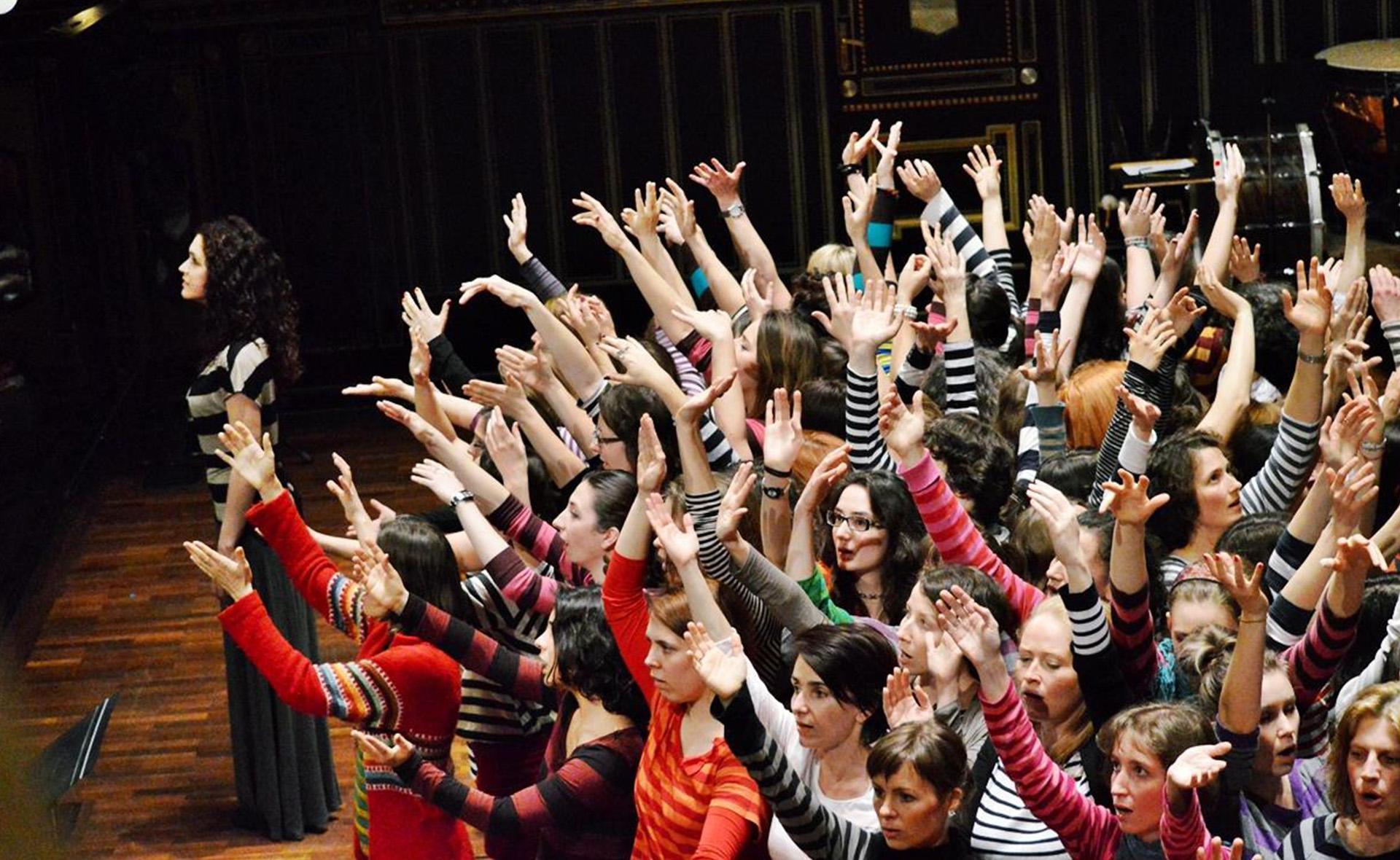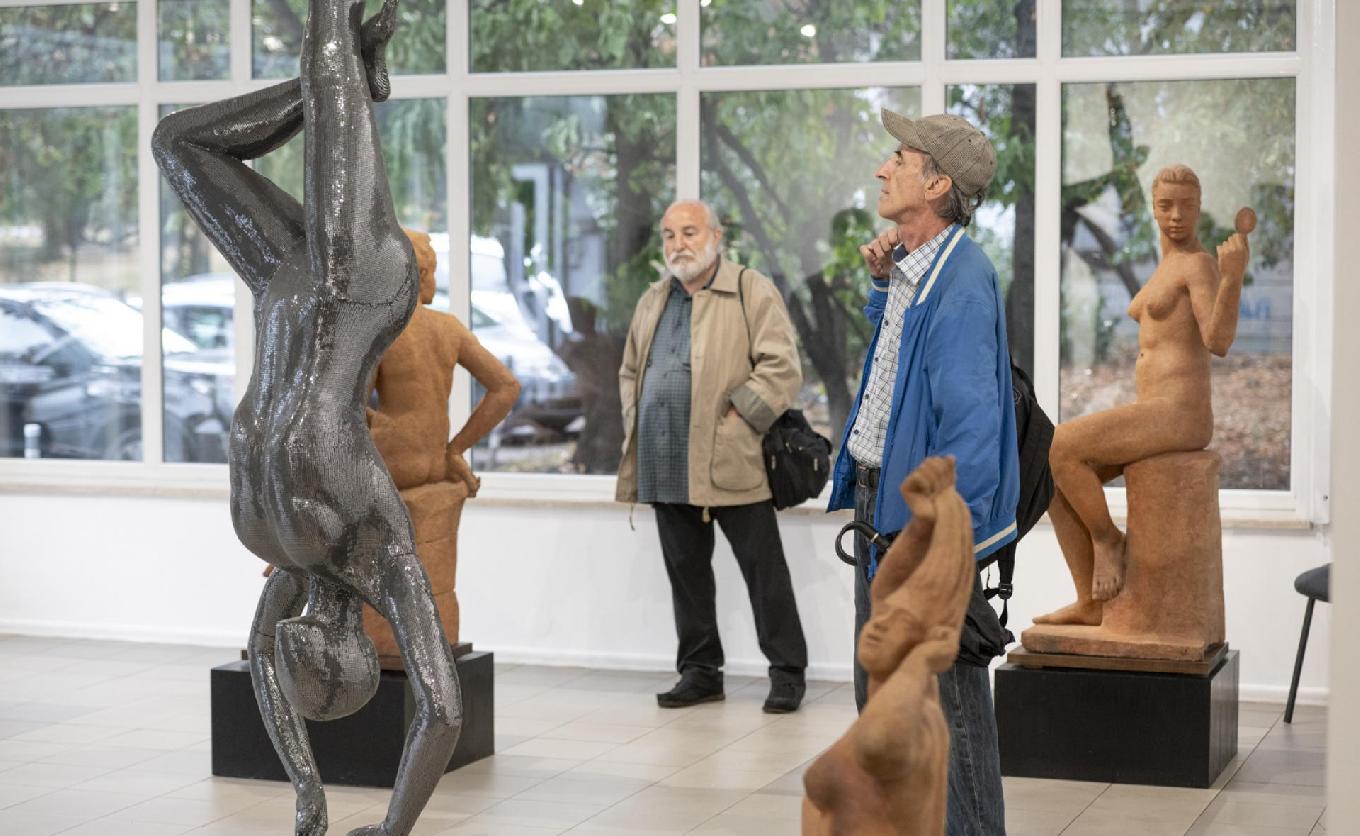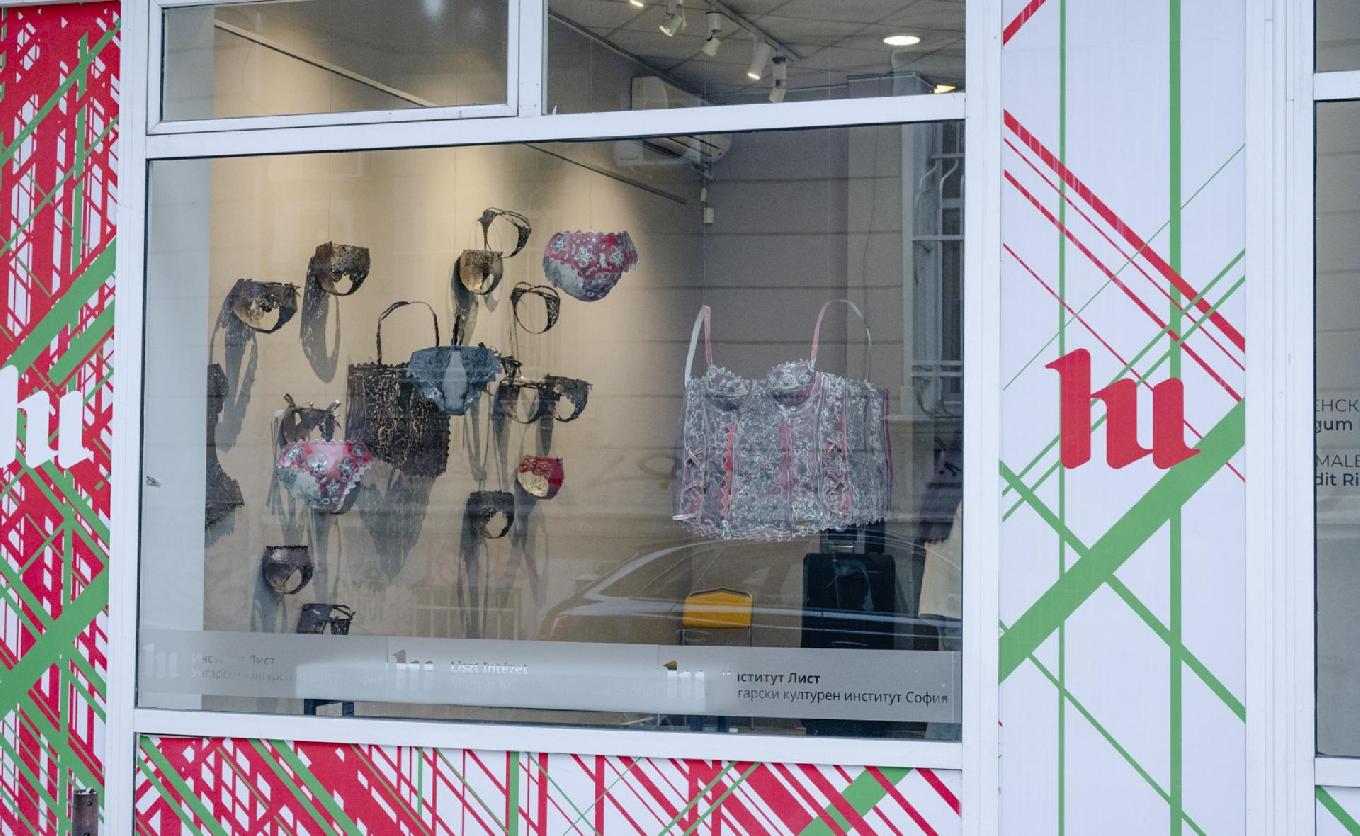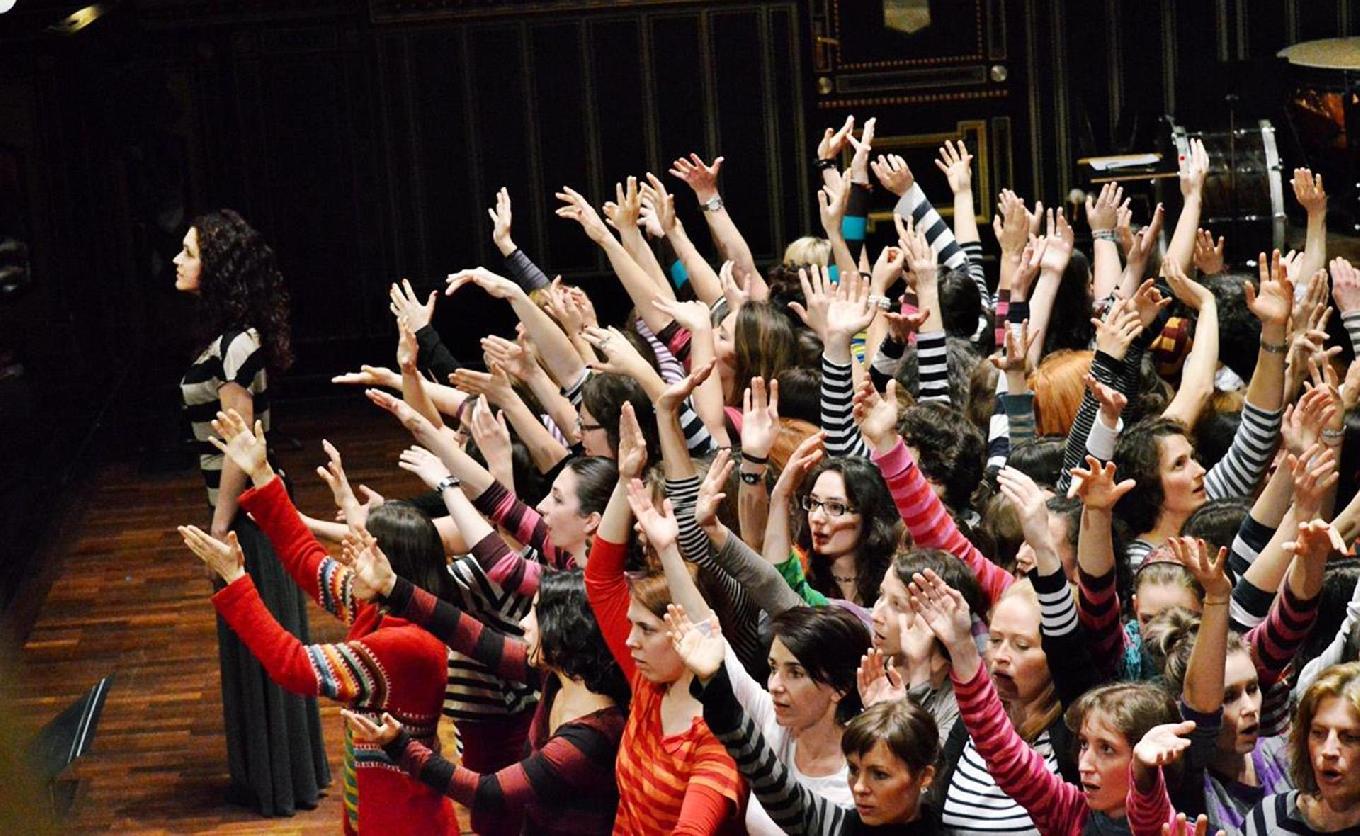
A Cavalcade of Programs in Sofia in Autumn
After meaningful summer programs, the Liszt Institute Sofia is hosting a veritable cavalcade of events this autumn for those interested in Hungarian culture. Concerts, movies, dance performances, fine arts, as well as workshops and presentations for experts are included. The Bulgarian public can get to know photographers Árpád Forgó and Anikó Robitz as a result of the Institute's work, and artist Judit Rita Rabóczky presented her work in two venues in Sofia as well. In addition to the exhibition, the Hungarian Cultural Institute commemorated Hungarian-Bulgarian Friendship Day on 19 October , which was celebrated with a wreath-laying ceremony and a concert by the improvisation choir of Csíkszerda.
A further collaboration between the Liszt Institute Sofia and the Nonsofia Formation brought two outstanding artists from the Hungarian geometric scene, Árpád Forgó and Anikó Robitz, to the Bulgarian audience. After traveling across most continents, the two artists have come to Bulgaria for the first time to showcase their signature works from recent years. Although the artists are heavily influenced by Hungary's rich abstract tradition, their works are relevant worldwide and stand out for their completely new interpretation of the principles of geometric art laid down a century ago.
Judit Rita Rabóczky’s exhibition Feminine Nature has been presented in two locations simultaneously—the Vaska Emanuilova Gallery, part of the Sofia Capital Gallery, and the Liszt Institute in Sofia—from 10 September to 10 November. The starting point of the Hungarian sculptor's work is female nature and the female body. The Vaska Emanuilova Gallery's permanent exhibition of ceramic figures includes seven of the artist's body sculptures made from recycled materials. The sculptures are depicted in motion, immersed in themselves, separated from the world around them, and connected to their reflections. These figures find themselves in an in-between space where femininity oscillates between seductively sexual and menacing. The works seem to complete Vaska Emanuilova's female narrative. In the exhibition space of the Liszt Institute Sofia, Judit Rabóczky's series The Mysterious Object of Desire can be seen, in which the stereotypes of femininity are emptied of their content and wrapped in iron armor. At the exhibition, the body is not present, but the essence of womanhood is conveyed strongly and ambiguously. The image of a woman wearing her femininity as protective armor is not new, but in the hands of Judit Rita Rabóczky, it becomes sophisticated and multifaceted, while also addressing many social stigmas. The dialogue between the two spaces and the two artists not only traces the formal development of contemporary sculpture and the concept of the female body, but also brings these topics into focus, especially through the contrast of materials, form, and messages. The exhibition was made possible thanks to the support of Gedeon Richter Nyrt. and the Hungarian Academy of Arts.
After last year's highly successful Anima Mundi Exhibition featuring the works of Máté Bartha, the Plovdiv International Photo Festival invited a Hungarian curator-educator this year to honor Hungarian traditions in the field of photography. At the festival, Judit Gellér, the current instructor at MOME and the former curator of the Capa Center, gave a presentation on photo books to a large audience, followed by a portfolio overview for Bulgarian photography students.
The next location of Deák17 Galéria's wonderful CsupaKép exhibition was the gallery of the Contemporary Art Center in Burgas, located on the coast. Besides the exhibition featuring nearly 60 illustrated books and reproductions, Emese Révész, one of the curators, gave an opening speech and lecture on the history of Hungarian book and children's book illustration to students studying graphics and illustration at the Burgas branch of the Bulgarian Academy of Fine Arts.
Contemporary dance could not be left out of the program: the performance of the FrenÁk Company was received by a full house at the independent theater festival, ACT Fest, in the Sofia contemporary art center, Toplocentrála, on 16 October. In addition to the dance performance for the general public, the professional audience could also participate in a workshop.
We traditionally celebrate Hungarian-Bulgarian Friendship Day on 19 October. On this occasion, the Institute laid a wreath on the memorial plaque of St. John of Rila in St. Sophia Church and organized a concert by the Csíkszerda choir in the lecture hall of the University of Sofia. As part of the program of the Hungarian EU Presidency, the concert was preceded by a workshop, attended by choirs and choir masters from all over Bulgaria. Csíkszerda (choir leader: Árpád Tóth) has developed a unique performance style during its fifteen-year history. Their repertoire consists of traditional folk songs, but they do not narrate the story; they only convey the emotional essence through their songs. At their concerts, the audience, seated in a circle, can experience spatiality, improvisation, a 50-voice sound curtain, and many other special effects. The performers try to break down the invisible wall between them and the audience. At their concert on 19 October, they performed Anna Molnár’s ballad.
During the month, interested parties could also see Hungarian films at two film festivals. Film director Dorottya Zurbó, an invited guest of the SofiaDocumental Festival, spoke about her movie The Agent of Happiness during a meeting with the audience, while the film The Masterpiece was screened as part of the Cinelibri Film Festival, which specifically focused on adaptations of literary works.
The students of the MOME Design Institute will close the month at the Melba Design Festival, which is also the opening event of the festival. The central theme of the exhibition and the accompanying presentation will be the reconsideration of traditions and the expression of contemporary views within those traditions. The invited guest is Peter Molnar, the director of the Design Institute. The colorful exhibition will showcase all departments of the Design Institute, from graphic to fashion design.



